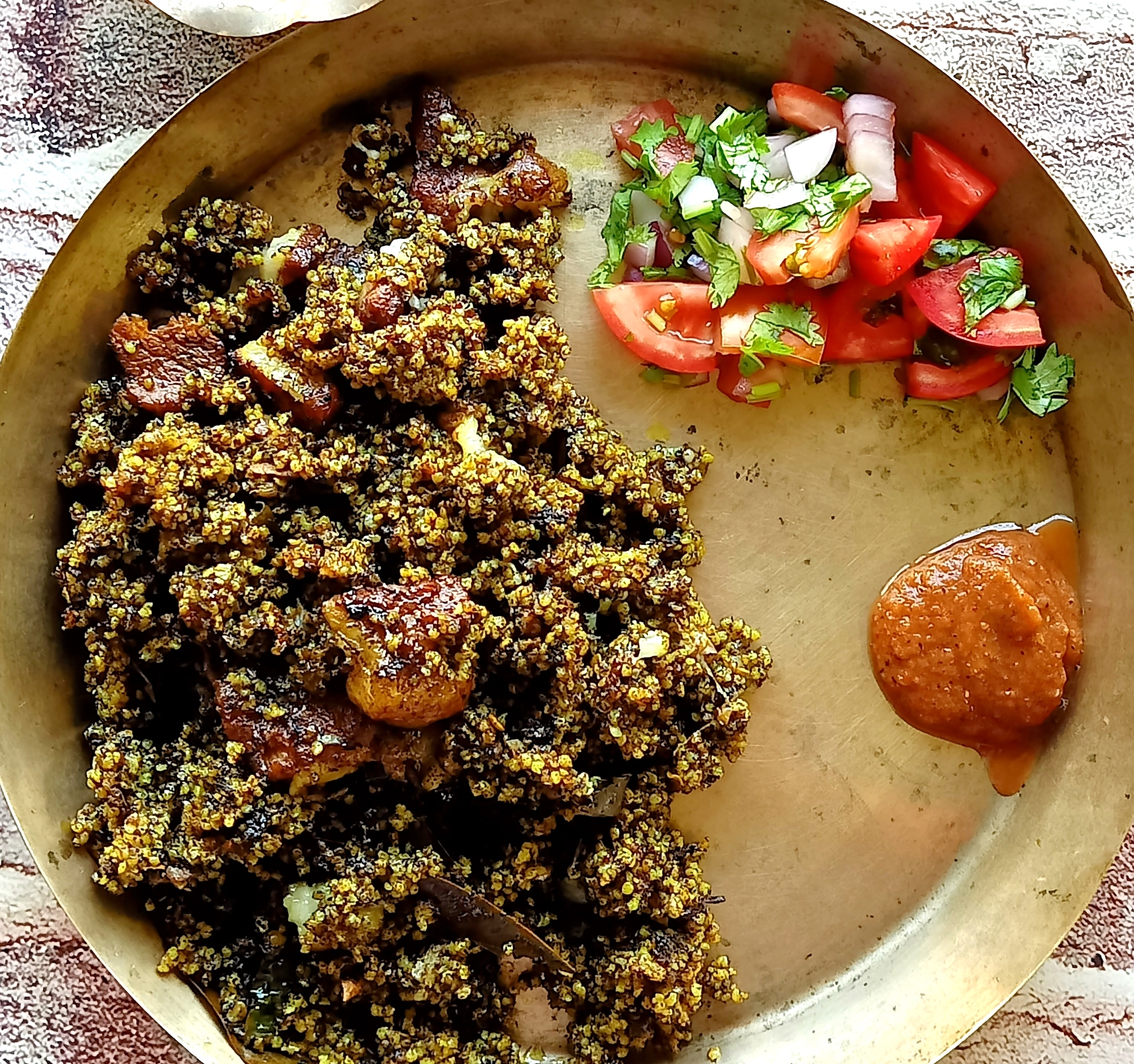
A traditional breakfast eaten by the Khasi community in Meghalaya, jadoh is a pulao prepared with pork meat and pork blood as its key ingredients. According to Sayani, the inclusion of meat and blood lend the jadoh a subtle yet distinct mineral taste. Mildly spiced, the jadoh gets most of its flavour from the pork fat. When properly rendered, pork fat provides bursts of richness that perfectly complement the grain in the dish. While Jadoh is traditionally prepared with rice, this recipe substitutes it with foxtail millet.
The tungtap chutney, a tomato and smoked fermented fish chutney, often accompanies this dish. The acidity and smoky notes of roasted tomatoes, chilies, and garlic, along with the pungent, umami flavour of fermented fish, offer a pleasant contrast to the rich and fatty jadoh.
Sayani’s memories of this dish are almost entirely vicarious, and borrowed from her older brother. An avid traveller and trekker, Sayani’s brother often shared stories of the food he encountered during his travels with her. Ever since the sixth grade, when her brother returned home with stories of the jadoh he had tasted in Meghalaya, Sayani has dreamed of savouring this dish just like her brother did, next to a woodfire in a kitchen with a thatched roof and walls made of wood. For her, this recipe is a vessel for her childhood fantasies.
Jadoh
| Foxtail millet, soaked overnight | 1 cup |
|---|---|
| Water | 2 1½ cups |
| Pork blood | 2 tablespoon |
| Pork belly (fatty cut) | 8 - 10 pieces |
| Onion, chopped | 1½ cup |
| Ginger, chopped | 1 tablespoon |
| Garlic, chopped | 1 tablespoon |
| Green chillies | 3 - 4 |
| Black sesame seeds | 1 teaspoon |
| Turmeric powder | 1½ teaspoon |
| Bay leaves | 2 |
| Salt | To taste |
Tungtap
| Tomatoes | 2 |
|---|---|
| Garlic, unpeeled | 4 - 5 cloves |
| Onion, medium | 1 |
| Dry red chillies | 3 - 4 |
| Timur | ¼ teaspoon |
| Green chillies | 2 |
| Fermented fish | 1-2 pieces |
| Salt | To taste |
Salad
| Onion, small | 1 |
|---|---|
| Tomato | 1 |
| Green chilly | 1 |
| Coriander leaves, chopped | 1 tablespoon |
| Lemon juice | 1½ teaspoon |
| Salt | To taste |
What You Will Need
Pot, pressure cooker (optional), mixer-grinder or mortar and pestle, skillet or tawa, spatula, 3 to 4 bowls for keeping mise-en-place.
Instructions
For the Jadoh, start by straining the soaked millet. Mix it with the pork blood, and set aside.
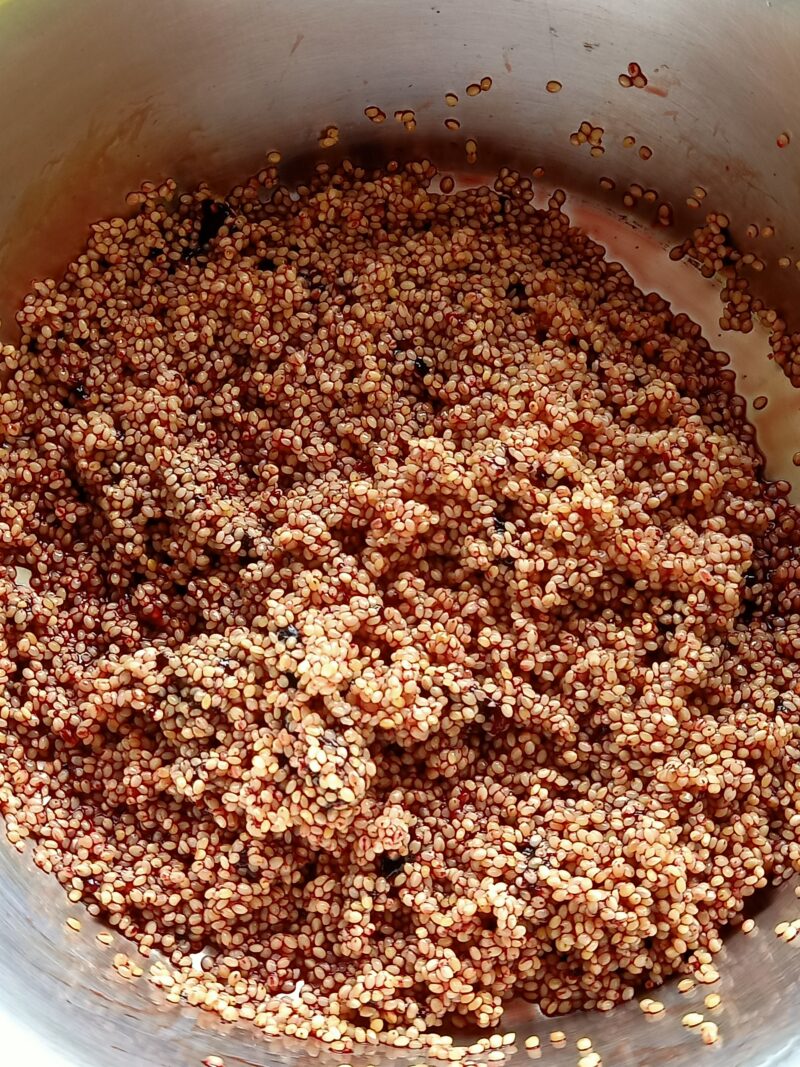
Dry roast black sesame seeds in a skillet. Grind the roasted sesame seeds with half a teaspoon of salt using a mortar and pestle. The salt will ease the grinding process.
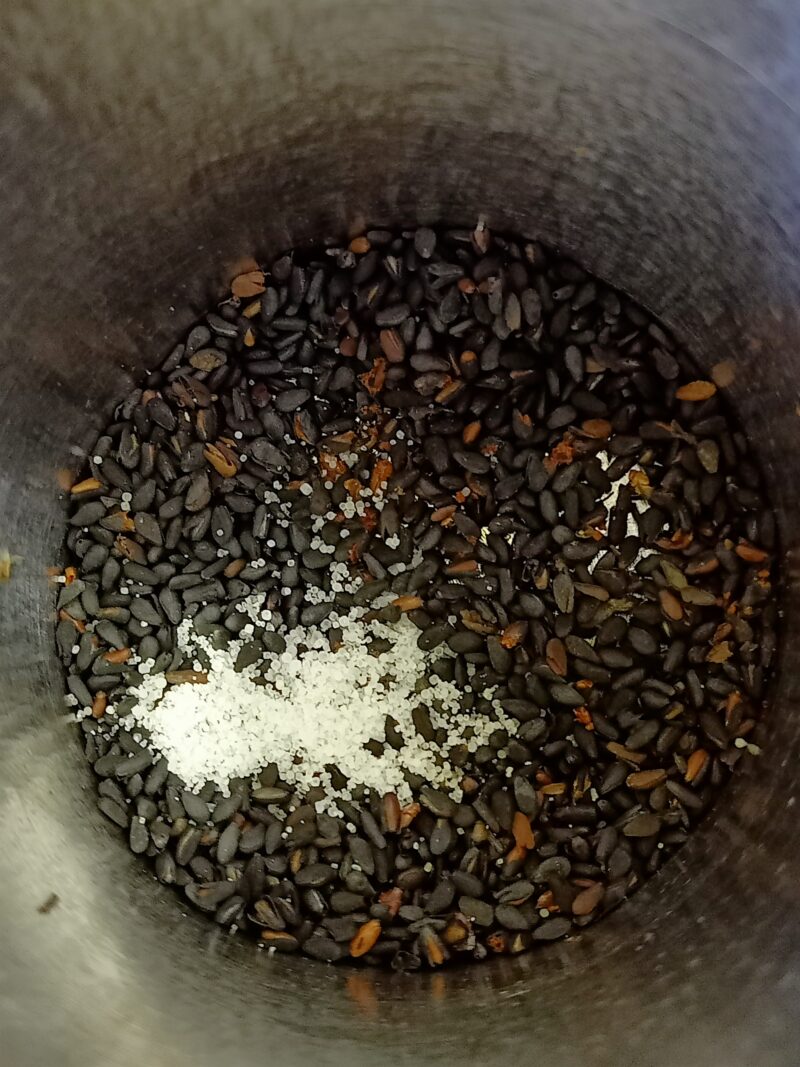
Make a rough paste of ginger, garlic, and green chillies using a mortar and pestle and set aside.
In a pot, place the pork belly and fry for 5-6 minutes till the pieces render fat. Add the bay leaves and fry the pork for another 2 minutes.

Add the chopped onions and continue stir frying the pork and aromatics mix for 4 minutes.
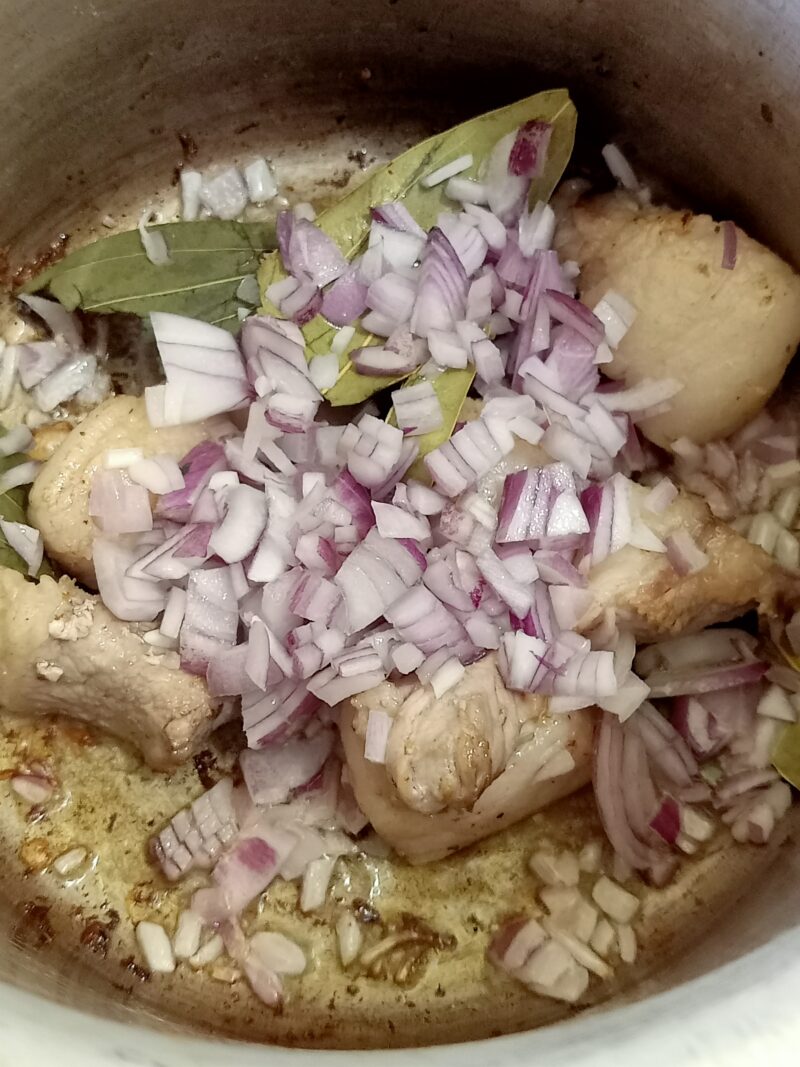
At this point, add the ginger, garlic, green chilli paste, and turmeric powder to the mix and continue cooking for 5-6 minutes.

Add half a cup of water and cook the mix for 25 minutes, after which the pork should be about ninety percent cooked. Alternatively, if you are short on time, you can pressure cook the pork for two whistles on medium to high heat.

Now add the blood and millet mixture, salt, and crushed sesame seed powder.
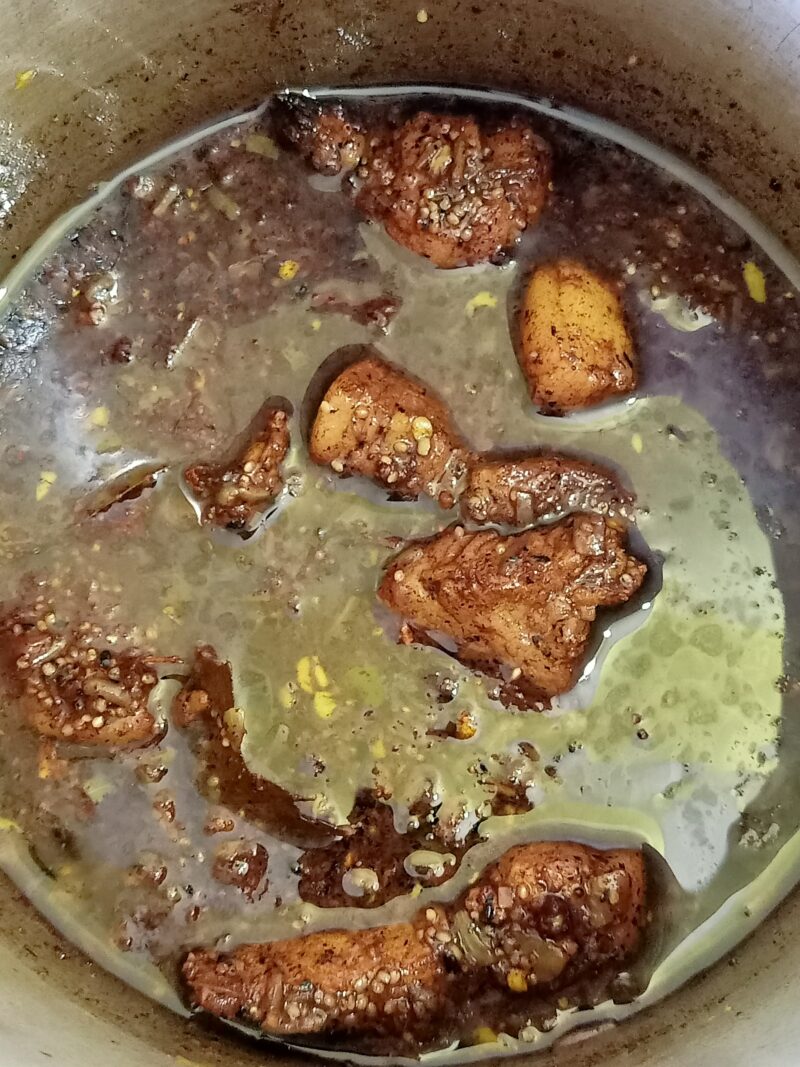
Cover the pot and cook the millet and pork mix on low to medium heat until all the water evaporates and the millet is cooked completely. Stir intermittently to avoid sesame seeds sticking to the bottom of the pan.
Remove the pot from the heat and let the Jadoh rest for 10 minutes.
For the tungtap chutney, start by roasting the onions, tomatoes, garlic, green chillies, and fermented fish on an open flame.

Soak the roasted onion, tomatoes, and garlic in water and discard as much of the burnt skin as possible.
Add the peeled and roasted ingredients along with dry red chillies, the roasted fermented fish, timur, and salt in a blender and blend everything together into a smooth paste.
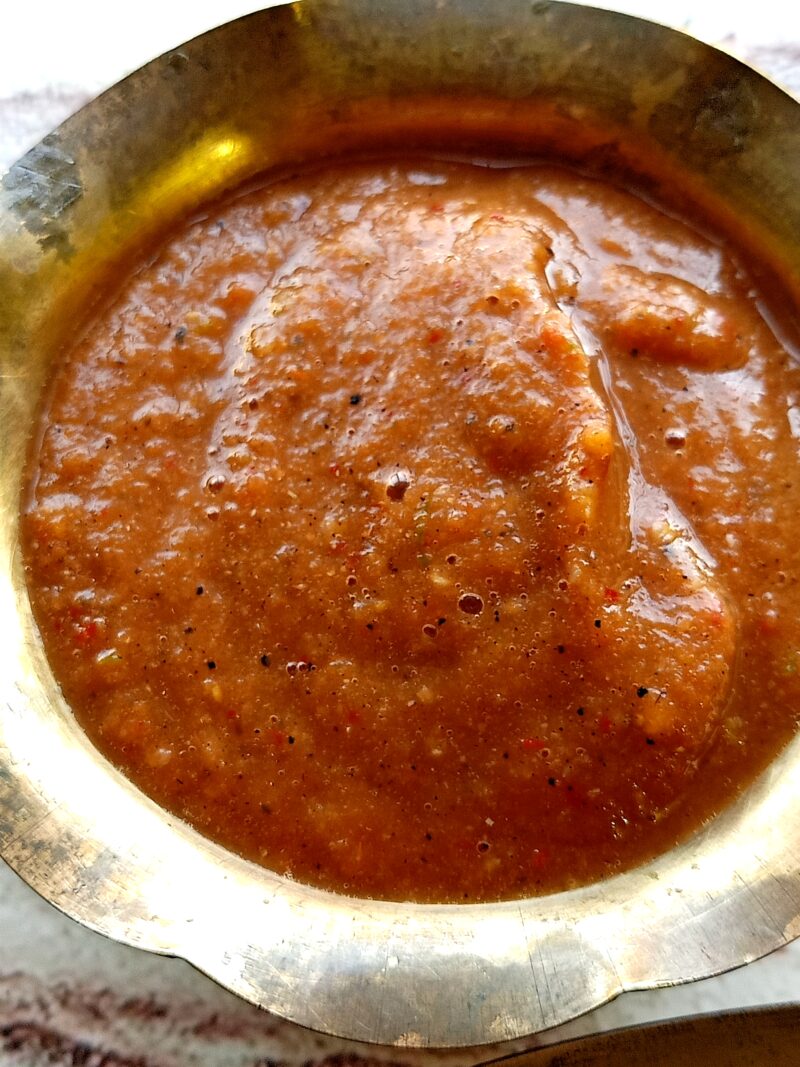
For the salad, start by chopping the tomatoes, onions, green chillies, coriander leaves, salt, and lemon juice. Mix everything together. Serve the jadoh with tungtap and salad.
Tips and Variations
Take care while cooking Jadoh. Sesame seeds and millet tend to stick to the bottom of the pan. Keep stirring intermittently to avoid burning and sticking
Some prepare Jadoh solely with pork blood, while others use only black sesame seeds. This recipe uses both ingredients.
For tungtap, some prefer to flame-roast only the fermented fish and not the vegetables. The amount of fermented fish can vary based on personal preference.
If timur is unavailable, schezwan peppercorn can be used as an alternative to make the tungtap.
The recipe has been developed by Sayani Sengupta, a chef volunteer for the MRP cooking lab and a home chef based out of Kolkata. Sayani runs her own food brand, Gooseberri, for which she often writes recipes. Her recipes have also featured in Bengali magazines, such as Sananda, as well as other publications like Times of India, Telegraph, and Indulge Express.

This recipe is part of the Millet Revival Project 2023, The Locavore’s modest attempt to demystify cooking with millets, and learn the impact that it has on our ecology. This initiative, in association with Rainmatter Foundation, aims to facilitate the gradual incorporation of millets into our diets, as well as create a space for meaningful conversation and engagement so that we can tap into the resilience of millets while also rediscovering its taste.

Rainmatter Foundation is a non-profit organisation that supports organisations and projects for climate action, a healthier environment, and livelihoods associated with them. The foundation and The Locavore have co-created this Millet Revival Project for a millet-climate outreach campaign for urban consumers. To learn more about the foundation and the other organisations they support, click here.
You must be logged in to rate this recipe.

Sign in with email

